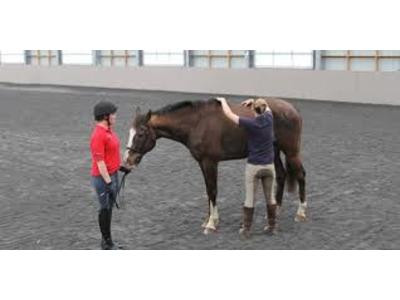Avoiding back pain in horses.
Your horses back is composed of a complex arrangement of muscles, tendons, ligaments, nerves, and cartilage all working together to support the horse’s skeletal structure and control the gaits. The spinal cord lies between the vertebrae in the spine and connects the central nervous system from the brain to all other limbs in the body.
If you have ever suffered from back pain you may have experienced yourself that a pinched nerve or muscle soreness can affect the whole body, resulting in a variety of symptoms from headaches to restricted movements. Back problems in horses can manifest in many ways, including; lameness, a reluctance to move under saddle, behavioural issues, or a shortening of the gait.
While your local vet, vet-physio or equine chiropractor may be able to diagnose and treat the source of the back-pain, prevention should be the focus. Protecting your horses back is essential to having a happy, free-moving horse. Here are some tips on how you can help protect your horses back;
Correct fitting tack. Having your saddle regularly checked by a qualified saddle-fitter will ensure that it is not restricting or impacting the spine or back muscles. The Society of Master Saddlers recommends having your saddle checked at least twice a year, and more often if the horse has a change in body shape due to fitness or condition.
A balanced diet. The horse’s muscles, blood flow, ligaments and cartilage can all be negatively affected if the horse is lacking in essential nutrients. Ensuring a balanced diet is critical to keeping your horses body happy and functioning at its best. Supplements such as glucosamine and MSM can be added to the diet to assist when the horse is in intense work, increasing/coming back into work, or to support aging.
Correctly Balanced feet. Having incorrect or overgrown feet can cause the horse to have an incorrect posture or twisted gait which may lead to soreness through the horses back. Hooves should be trimmed and balanced by a qualified farrier every 5 to 6 weeks depending on the rate of your horses hoof growth. Biotin is an essential component of the hoof and can be supplemented in the feed to assist with hoof growth if needed.
Correct posture during exercise. Stretching exercises during the warm up and cool down periods of your horses workouts are key in ensuring that the horses muscles are softened and prepared to undertake exercise, whether that be cross-country training, trail riding or a workout in the dressage arena, allowing the horse to carry itself in a hollow or resisting frame may cause wastage of the back muscle.
If you suspect your horse is showing signs of back pain it is recommended to seek advice from your vet, vet-physio or equine chiropractor.

